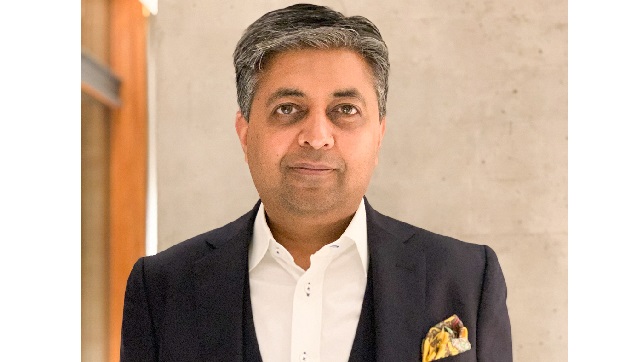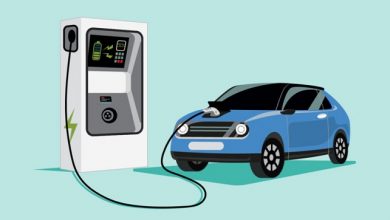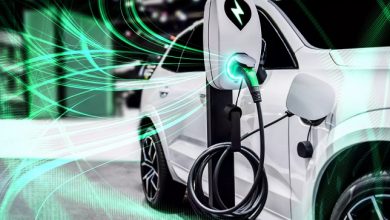EV sector may see disruptions in coming years

Telematics Wire spoke to a pioneer of electric mobility in India, Naveen Munjal. A freewheeling chat which covers various issues from Covid -19 crisis to enabling the EV ecosystem through PGO spokesperson to what should a startup in EV do.
How have you managed the crisis of COVID-19?
Crisis is not new to any industry. Let me go back to 2009 to 2013 crisis. During that time we had around 200 dealers across the country. Volumes had crashed completely. To overcome it, we came up with a plan to extend our services to across the board electric vehicle. We told our dealers to start servicing competition vehicles also. We started supplying spares for all the vehicles including our competition to our dealers. We started a campaign- “If you got an electric vehicle and your dealership/service centre is closed, it does not matter, come to us.” The dealers started propagating it in their neighbourhoods. This resulted in stabilising the confidence amongst the customers. Secondly, we achieved the primary objective to keep the industry alive. Third and an important factor was the dealers who had little to no revenue at that point of time; started generating revenue from the vehicles they were servicing.
The market began to recover in 2013. Then came the announcement of NEMMP policy (National Electric Mobility Mission) which talked about putting 6-7 million electric vehicles on road by 2020. It said that the government spends INR140 billion leading to savings of forex in fossil fuel purchase of around INR 400 billion in the process. This is just savings in oil, when dollar about $68 or $70. In 2015, government launched FAME I, a good initiative, which pushed electric mobility. Though it was supposed to be 2 years it lasted for 4 years.
In 2019 FAME II was released. But thereafter this year we have COVID pandemic where the whole market collapsed. There was uncertainty in the market in the beginning of the COVID-19 during mid March. Shedding the negatives of uncertainty, we started working actively with our dealers, with our staff and employees with positivity. We discussed things which we need to do. First thing we did, we started training up our dealers on how to handle digital and social media. So far the whole digital and social online sales, e-commerce sales had a conflict with dealers. For them it was either online or offline sales. We said that okay let’s blend the two together. We started training up the dealers on how to handle online sales, how to create and update the web pages, how to create social media presence and how to push their products through these to reach customers. To the customer we started telling them, that look, if you order a vehicle, we deliver them at your home. This created a lot of positivity in the environment. Customers started responding, dealers started booking sales and our staff got very involved. We started promotion in early April and we said to our customers that there is a certain booking amount which is non refundable, if you book a vehicle, we deliver the vehicle to you when the lockdown opens up. Whole bunch of people booked the vehicle, but a very large number of people who had filled enquiry form, did not book the vehicle. They did not put down payment etc. We wanted to understand what is holding them back and why they are not buying the vehicle. We started doing online webinars with potential customers, we did several webinars with thousands of customers. Webinars which were divided by language, divided by region and more. We would have our senior team in webinar, from CEO to R&D head, to finance head, to sales head, to marketing and everybody. We wanted to understand what is it that is holding them back? What are the issues- product limitations, quality, range whatever? One of the factors that came out during the webinar from potential customers was- “We have never tried electric vehicle. If we have not had a test ride then how could we spend so much.”
The next promotion we came out with, we said we deliver the vehicle at your home, you make the full payment, you keep the vehicle for 3 days, if you don’t like it, you can return it within 3 days, there is no amount deducted, there is no depreciation, nothing. We will give you exactly the same amount as you paid us. Out of the thousands of vehicles which were sold in the process, we had only one return.
Hence, even with COVID-19 at its peak, we were pushing ahead in a positive manner. Whatever online sales we did last year, this year during COVID-19 time we have done 9x to 10x of that till late July or early August.
So can we say COVID-19 gave an opportunity for Hero Electric to re-engineer its marketing and sales channel?
In a way I would say yes. Even though at this point of time we are training dealers etc. but the magnitude of training that we did during COVID-19 lockdown months, is very different. Necessity is the mother of all invention and it proved true for us too, we re-engineered our marketing and sales channel. We had no option, we had to keep the dealer network alive, we had to keep our supply chain alive, we had to keep our company alive and the only way we could do it, was by innovation and using these tools.
Would the marketing and promotion continue on the same lines after COVID?
We are going to keep innovating. We will keep on improvising on what we are doing. Today, many companies have started doing the same thing, so we have to move ahead to the next level. It’s the constant change. We are in process of continuous changes and amendments. The objective is that the customer should benefit and new customer should start experiencing electric. We also found that over 40% of our customers are repeat customers or referral customers.
Awareness about electric vehicle across the country is less. Number of electric vehicles on road which you see is less. Our market is still small, but nevertheless we have to keep on improvising. We have to constantly keep on getting the customer in the dealership or make them look at our website. It is important to make them try out our vehicle. We have very few cases, where once they try our electric vehicle, they go to another vehicle, simply because the experience is so good. There is no vibration in our electric vehicle and it’s convenient to use.
What have you done to overcome the current limitations in charging infrastructure?
In many places you don’t have charging infrastructure. You could be living in an apartment in Mumbai, Gurgaon, Noida, Pune or Bangalore, but you do not have charging point on the ground floor where you are parking your vehicle. To make it easy for our customers, we made battery swappable.
Across the product range, we have 5 platforms and 11 vehicles on top of it. All 11 of them have portable battery, that was a primary thing. Secondly we made all the batteries uniform. We do not have different form factors of batteries. It is easy for us to maintain at our plant level and inventory level. It’s easy for the dealership to maintain and it’s easy for the customer in B2B and B2C. For B2B where they have a fleet of vehicles, the same battery goes into the multiple vehicles; for example, they have 10 vehicles, with 20 batteries. Hence 10 batteries are on charging, doesn’t matter which vehicles come back, one has to just take out the battery and plug it into the vehicle.
On the charging front we have made it easy to charge, like one can plug in vehicle anywhere like the way one charges mobile phones. Further we are creating charging infrastructure. We started as an experiment in some cities in the south, and we have already installed over 700 charging stations as of now. These are very simple charging stations, and deployed in arterial roads and close neighbourhood of the dealership within 5-7 kilometres radius. When you buy a vehicle, the dealer will give you a list of charging points in the 5 kilometres to 10 kilometres neighbourhood. Now, what happened with this, sales went up multiple folds. But people using charging points/infrastructure was minimal. It was about comfort in the back of the mind.
Our target is, in the next two years we should have 20000 such charging stations. Even though they are not going to be used and there is little revenue from them, it’s more of a convenience and comfort factor for the customer.
The next thing we did, that using our service network we spread the word that it’s a vehicle with LOW problems but not NO problems. It means that you will have issues and you will have problems. You will need battery change and a lot of things will happen, just as we have in automotive sector. We created this concept called PGO (Preferred Garage Owners). These are the roadside mechanics, where you take your two wheeler to fix your “panchar”(flat tyre) and other basic problems. Even though they can do it, they would say, “Sir humko nahin fix karna aata; ye electric hai; aap dealership pay jaaiye”, (Sir, I cannot fix it. This is electric vehicle, please visit authorised service centre). But you are far away from the dealership, what do you do? So we trained about 6000 roadside mechanics in fixing an electric vehicle. They become spokesperson for the company. Now, if a customer goes to them, and asks him what do they think of electric vehicle, theywould give them a fair opinion that it’s a very convenient vehicle. So we are creating positivity about electric mobility in ecosystem also.
Do you think something more needs to be done to improve the EV ecosystem?
Charging system for electric two wheeler is not complicated. It would certainly help, if government mandates, for example installing low cost(INR 100 to 200) charging ports in every public building, public and residential complexes. This would create comfort of confidence amongst users, that if I go there, need be, I can simply plug and charge my vehicle for a nominal cost. This is what number of governments around the world have done, created a basic charging infrastructure and let the people use them. In fact in many places, it is free charging. What we need is basic charging infrastructure but dense.
Can basic charging infra or battery swapping kiosk, replicate the success of PCOs in 1990s?
Replacing batteries as a service, in a current model could be a little tough. Customers may say that my battery is new or the battery I am getting is old. Even if we overlook this, the biggest problem at this point is of ‘density’. You don’t want to ride 5 or 10 kms to swap your batteries. This model may work for B2B because you are doing a particular run and then you go back to that station before they take goods and again go. It is a deployable model, if you look at E-ricks because they go in short circuit. But, when you look at consumer vehicle, you don’t have a dense swapping infrastructure.
The opportunities are numerous, for example, in Tier 3 and rural markets, even if they do not have electricity, service providers can come with a battery bank and replace the batteries. Or charge the batteries using small generator in the back of the van. Going forward we can use solar panels to charge EV. There is a lot which can be done and there are a lot of things which will innovate.
With regards to charging points, you do not want a queue of cars standing out there, that’s inconvenient and the customer is not used to it.
Do you think EV sales volume will start picking up in next 2 to 3 years or it is going to be 7 to 10 years?
I certainly don’t see this going as far as 7 to 10 years. I think it is going to be much before that. When we look at this industry, there are lots of tailwind and there is also headwind. There are resistances too. It is in the government agenda to push the electric mobility or clean mobility. For this they come up with the various policies- FAME I in 2015 and then FAME II in 2019. Delhi government has come out with their own policies and numerous other states are looking at their own EV policy. That’s because everybody understands the importance of having clean mobility.
Though there is substantial policy push, we need to see if they are all working in the right direction or not. An important factor is of demand creation, unless you have demand, it is not going to work. That is the case for any sector. When you see our domestic market, now EV products are available in the range from INR 40000 to 80000, which is in the same price point that 100cc engine vehicles are being sold. Performance may still not be there, but in terms of your price, performance parity was there already and is increasing year and year. ICs will continue to become more expensive as more and more emission norms get slapped on them. Petrol/diesel as we have already seen will remain expensive. On top of all this, we need clean and fresh air, which we all experienced briefly during Covid19 lockdown.
What are your views on batteries in EV?
For us, the performance of vehicle has been the key. We moved from lead acid to lithium ion batteries which are far better and have longer life. We give 3 year warranty on our battery, but the batteries come back for the replacement after 4, 5 or 6 years. Beyond this we are looking at batteries for their stationary application like battery energy storage. Thereafter it can be disposed of after 10-12 years of its usage.
What’s your view about localisation of components?
Two wheeler will certainly form the bottom of the pyramid, they will form the volume basis. This will make ground for the component companies to invest. For many years we have been working on localisation, because with increasing volume you cannot rely on imports all the time. You need to have the local supply chain, which is right next to you. This can help manage inventory levels and production volumes better.
The problem is that no good Tier 1 company is willing to look at electric mobility, because the volumes are so low.
What are the challenges with EV industry as on date?
The fundamental issue, no matter what production volume that you are doing, effort required to produce a hundred thousand, or a few million vehicles is same. In India the market is only about hundred and fifty thousand units. This number is divided amongst the manufacturer and amongst manufacturer’s various models. In such a situation, for any good Tier 1 supplier, the volume is too low.
But in the last couple of years, Tier1 companies have realised the potential of our market and have started now looking at this segment.
Large part of localisation is already done. But, there are still parts like motors, battery cells etc., where we need some good players to chip in. Local assembly of batteries are already in place. Though these are good moves towards self reliance, these things are also based on volumes. It has to make the commercial sense to every body. It has to make commercial sense for us and to Tier 1 suppliers. If we tell the Tier 1 guys to make the parts for us, the price goes up by 30%, because the volumes are not there. But we started the process a number of years back and large part of our vehicle is already localised. We are moving in the right direction in terms of localisation.
Do you see new emerging technologies like vehicle telematics benefiting the EV segment?
This is a very important sector. We have been working for a number of years on telematics and we got numerous partners, with whom we work in telematics. What we have done in e-mobility, we have given our customers the option for vehicle telematics, about a couple of years back. This is similar to 5-6 years back when we introduced lithium batteries against lead and gave customers a choice between lithium and lead. It took us a while, before we converted entirely from lead to lithium in our offering. In the process we also trained our dealer and service network.
Same thing we are doing with telematics as well, we introduced telematics in the entire range of vehicles, but as an option. We offer four levels of telematics to customers, they can choose from a very basic one to an advanced one. Many customers would not accept SIM card inside their vehicle for which they have to pay recurring monthly service charge. Most of them were interested in ride from place A to B rather than feature. B2B segment were more keen on advanced vehicle telematics features which has geofencing and has things like if you open up the glove box it sends an alarm to your phone. Connectivity is going to be the change over next few years.
We see many startups coming in the space of EV, particularly in two wheeler and e-rickshaw. What suggestions you have for young entrepreneurs venturing in this segment?
This is a new sector, and it will take time to evolve. We have already seen in the last 3 years, when we increased prices, when we moved from lead acid into lithium. We have moved from highly dependent on subsidies, to no dependence on subsidies and yet we are seeing growth in this sector. This tells that the market is evolving and is on its path of disruption. It will begin in slow pace and then go up like a hockey stick curve. So any company which is coming in, they have to understand what the customer wants. There are startups going completely the other way, which is purely aspirational but not practical. This doesn’t work.
The offering has to be a blend of technology, practicality, usage, cost and aspiration, and if the customer does not see all of these, he/she is not going to buy. Convenience is important, portable batteries we believe is very important factor and that’s something which has worked very well for us. So anybody coming in this sector which is going to evolve substantially over the next couple of years, needs to have a clear vision, this is the marathon not a sprint. Don’t come in throwing all money at it in a short span of time, going for huge advertising etc. Because you have got to sustain for a long period. The second factor is when you start innovating a product, when you are launching a product, do not invest too much in trying to come up with ‘the perfect product’. There is no perfect product, its works in progress always. Launch at the time when you think it’s good for the customer and then keep on innovating, keep on taking constant feedback from the customer and keep on constantly improving the product.
One thing which effectively we do is, once a customer buys a vehicle, for next 18 months we calls them at least 3 to 4 times to find out about his journey, how he is experiencing, what are the issues that he may be having and even the bad or negative feedback about our product, and we constantly keep improving based on this. Lot of companies shy away from talking to customers, because you don’t know what you are going to get. Yet we say, throw at us what you have. We figure it out based on practical views on what is possible or what is not.
Opportunities are going to be abundant, time yourself itself wisely and then be in it for the long run no matter what happens.
Naveen Munjal did his schooling from Lawrence School Sanawar, and MBA in International Marketing from Huron University, UK. He has worked across various sectors – starting his Automotive journey working at Land Rover in Solihull, UK; prior to joining his family business in early 90s. In 2008, he was instrumental in founding SMEV (Society of Manufacturers of Electric Vehicles).
Published in Telematics Wire






2 Comments